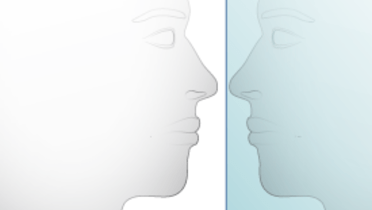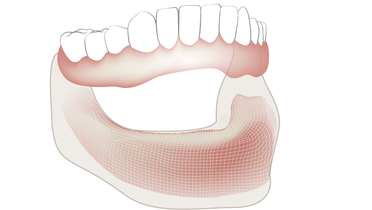-
0
Patient Assessment
- 0.1 Patient demand
- 0.2 Overarching considerations
- 0.3 Local history
- 0.4 Anatomical location
- 0.5 General patient history
-
0.6
Risk assessment & special high risk categories
- 5.1 Risk assessment & special high risk categories
- 5.2 age
- 5.3 Compliance
- 5.4 Smoking
- 5.5 Drug abuse
- 5.6 Recreational drugs and alcohol abuse
- 5.7 Parafunctions
- 5.8 Diabetes
- 5.9 Osteoporosis
- 5.10 Coagulation disorders and anticoagulant therapy
- 5.11 Steroids
- 5.12 Bisphosphonates
- 5.13 BRONJ / ARONJ
- 5.14 Radiotherapy
- 5.15 Risk factors
-
1
Diagnostics
-
1.1
Clinical Assessment
- 0.1 Lip line
- 0.2 Mouth opening
- 0.3 Vertical dimension
- 0.4 Maxillo-mandibular relationship
- 0.5 TMD
- 0.6 Existing prosthesis
- 0.7 Muco-gingival junction
- 0.8 Hyposalivation and Xerostomia
- 1.2 Clinical findings
-
1.3
Clinical diagnostic assessments
- 2.1 Microbiology
- 2.2 Salivary output
-
1.4
Diagnostic imaging
- 3.1 Imaging overview
- 3.2 Intraoral radiographs
- 3.3 Panoramic
- 3.4 CBCT
- 3.5 CT
- 1.5 Diagnostic prosthodontic guides
-
1.1
Clinical Assessment
-
2
Treatment Options
- 2.1 Mucosally-supported
-
2.2
Implant-retained/supported, general
- 1.1 Prosthodontic options overview
- 1.2 Number of implants maxilla and mandible
- 1.3 Time to function
- 1.4 Submerged or non-submerged
- 1.5 Soft tissue management
- 1.6 Hard tissue management, mandible
- 1.7 Hard tissue management, maxilla
- 1.8 Need for grafting
- 1.9 Healed vs fresh extraction socket
- 1.10 Digital treatment planning protocols
- 2.3 Implant prosthetics - removable
-
2.4
Implant prosthetics - fixed
- 2.5 Comprehensive treatment concepts
-
3
Treatment Procedures
-
3.1
Surgical
-
3.2
Removable prosthetics
-
3.3
Fixed prosthetics
-
3.1
Surgical
- 4 Aftercare
Mucosally supported - Overview and important considerations
Key points
- Despite considerable advances in preventive efforts and restorative treatment, a high percentage of elderly people will still become edentulous and increase the demand for care; increasing age adds to the trend
- Treatment of edentulism requires managing the esthetic, functional and biomechanical challenges as well as addressing patients’ psychological/behavioral situation and age-related concerns
- Treatment with full dentures frequently contribute to a predictable and satisfactory quality of life for most edentulous patients, however is not a panacea for the edentulous predicament since some patients might be or become, prosthetically maladaptive
Facial appearance and social interaction
The human face represents a small proportion of the body’s surface; but it embodies our social identities and is a major vehicle for interpersonal communication. Facial appearance reflects inherited characteristics on which may be superimposed effects of disease and trauma; or more commonly, untreated or poorly treated edentulism. The latter poses the hazard of destruction of part of the facial skeleton, distorts overlying soft tissue shape and leads to varying degrees of functional inadequacy. It may also be perceived as equivalent to losing a body part. Its management demands both clinicians’ technical expertise and empathy with patients’ fears and aspirations; and more importantly their individuality.
Management of edentulism
In a public-health context, edentulism results from combinations of dental diseases plus cultural, financial and attitudinal determinants. Its complete denture management is virtually universally available and relatively inexpensive. The clinical skills employed frequently contribute to a predictable and satisfactory quality of life for most edentulous patients, as well as the satisfaction of managing patients’ behavioral and age-related concerns and infirmities. Complete dentures are however not a panacea for the edentulous predicament since an undetermined number of treated patients already are, or will eventually become, prosthetically maladaptive.
Published reports suggest that complete edentulism has now declined and is likely to continue to do so. However the need for prosthodontic care will remain high due to the increase in life span.
Compelling concerns persist regarding optimal clinical management and health policies:
- Psychological and biomechanical consequences of edentulism cannot be understated, while the unmet need for complete denture treatment is likely to remain high, even in industrialized countries. It may also increase in some.
- A high percentage of older people will still become edentulous and increase the demand for care.
- Long-standing edentulism will require diverse, if unascertained, management options, with a forecasted significant numerical increase in edentulous patients requiring complex and challenging management.



